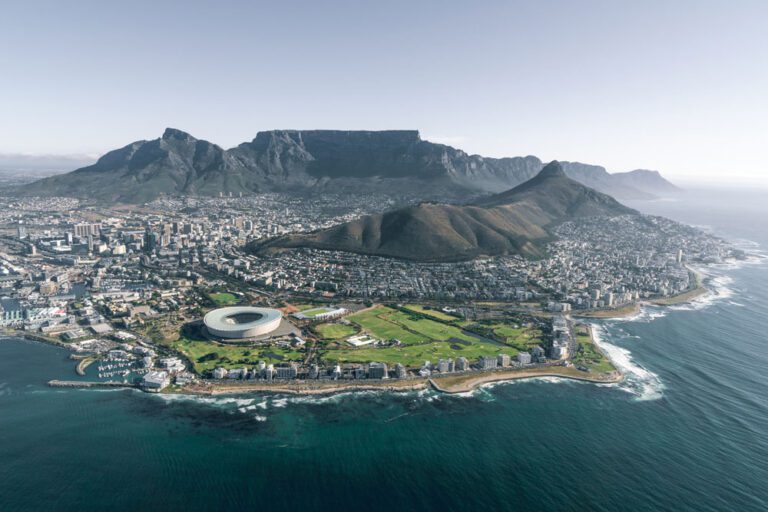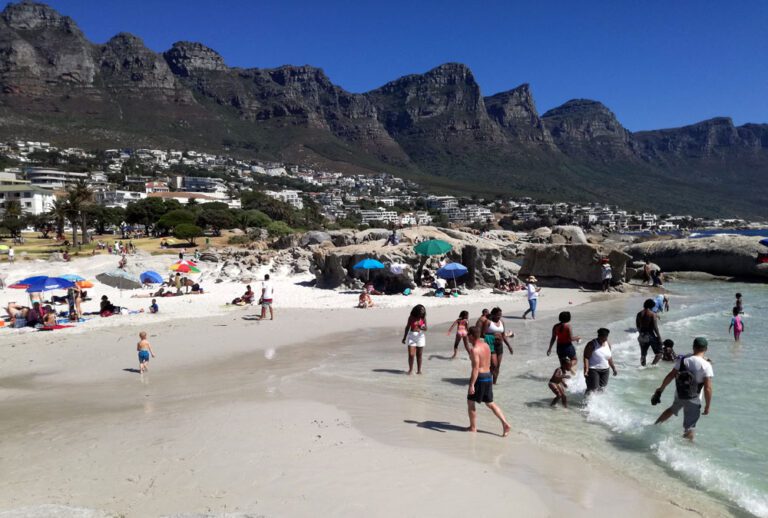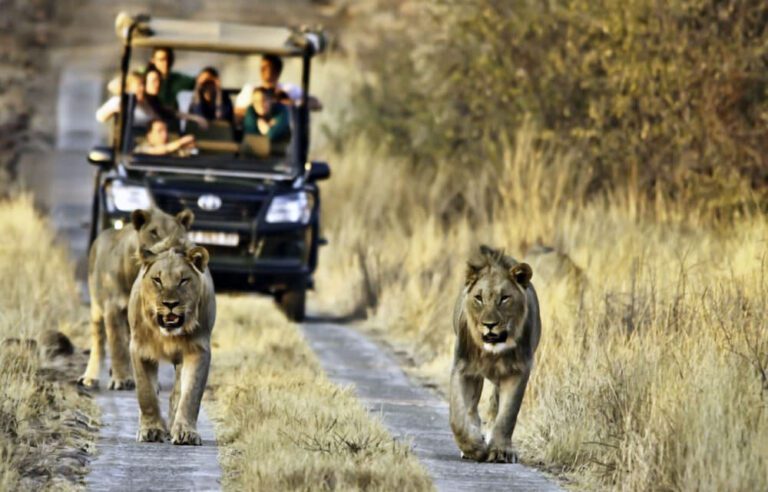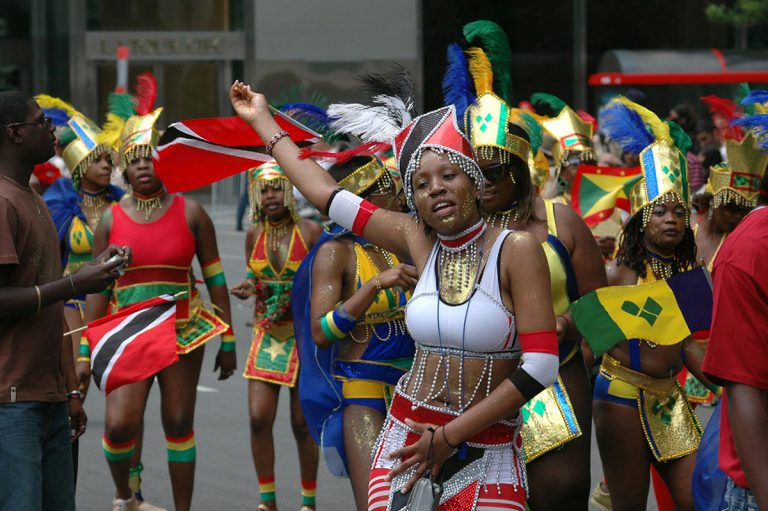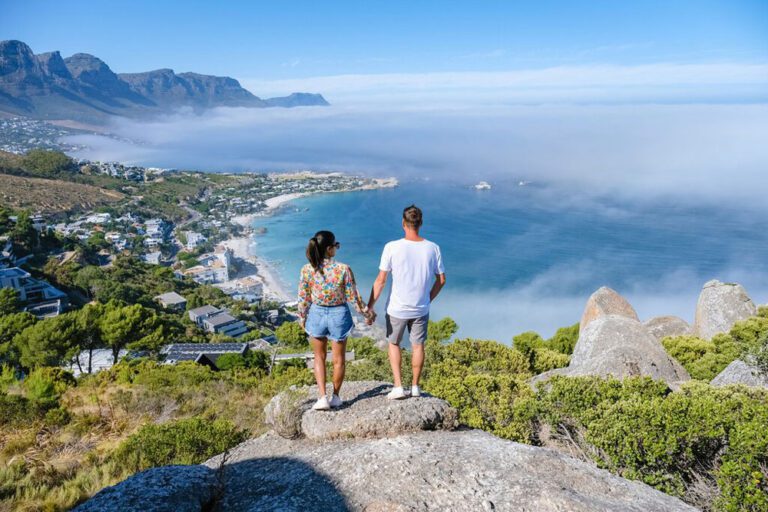A Journey Through Namaqualand: 10 Best Things to See and Do
Last updated on June 24th, 2023 at 05:23 pm
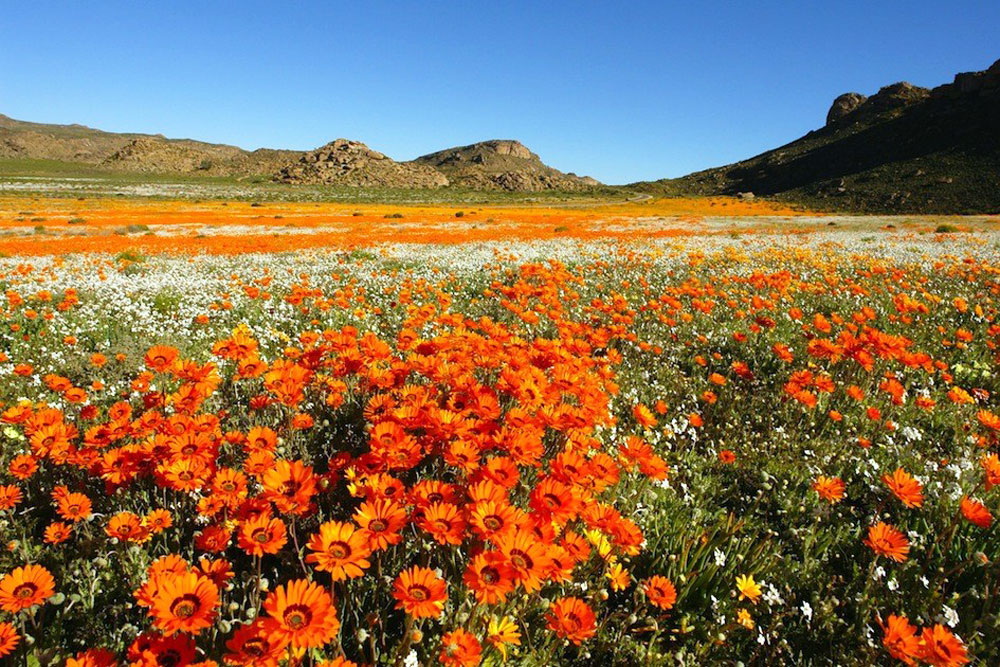
Namaqualand is a region located in the northern part of South Africa, covering parts of the Northern Cape and Western Cape provinces. It is known for its unique and diverse flora, particularly during the spring months when the desert landscape is transformed by colorful wildflowers.
The region is also home to several indigenous communities, including the Nama and San people, who have inhabited the area for thousands of years. Namaqualand has a rich cultural heritage, with many traditional practices and customs still observed by its inhabitants today.
In addition to its natural and cultural attractions, Namaqualand also offers visitors a range of outdoor activities: hiking, birdwatching, and game viewing. The region is also renowned for its stargazing opportunities, with clear, unpolluted skies providing an ideal environment for astronomy enthusiasts.
The top 10 things to do when you visit Namaqualand are:
1. See the Wildflowers
Namaqualand is home to some of the most stunning wildflower displays in the world. The region is known for its arid landscape but when the winter rains arrive the landscape is transformed into a colorful carpet of wildflowers.
The Namaqualand wildflowers are incredibly diverse with over 4,000 different species of plants in the region. The flowers range in color, shape, and size, and include daisies, lilies, succulents, and other unique species that are found nowhere else on earth.
The best time to see the wildflowers in Namaqualand is between August and September when the flowers are in full bloom. The exact timing of the blooms can vary from year to year depending on the rainfall patterns so it’s best to check with local authorities to plan your trip accordingly.
Some of the best places to see the wildflowers in Namaqualand include the Namaqua National Park, Goegap Nature Reserve, and the West Coast National Park. These parks have hiking trails, picnic areas, and other amenities that make them great places to explore the wildflowers and the surrounding landscapes.
If you’re planning to visit Namaqualand to see the wildflowers be sure to bring comfortable shoes, a hat, and sunscreen as well as a camera to capture the stunning scenery. And remember to respect the natural environment and follow all park rules and regulations to help preserve this unique and beautiful region for future generations.
2. Explore the Richtersveld
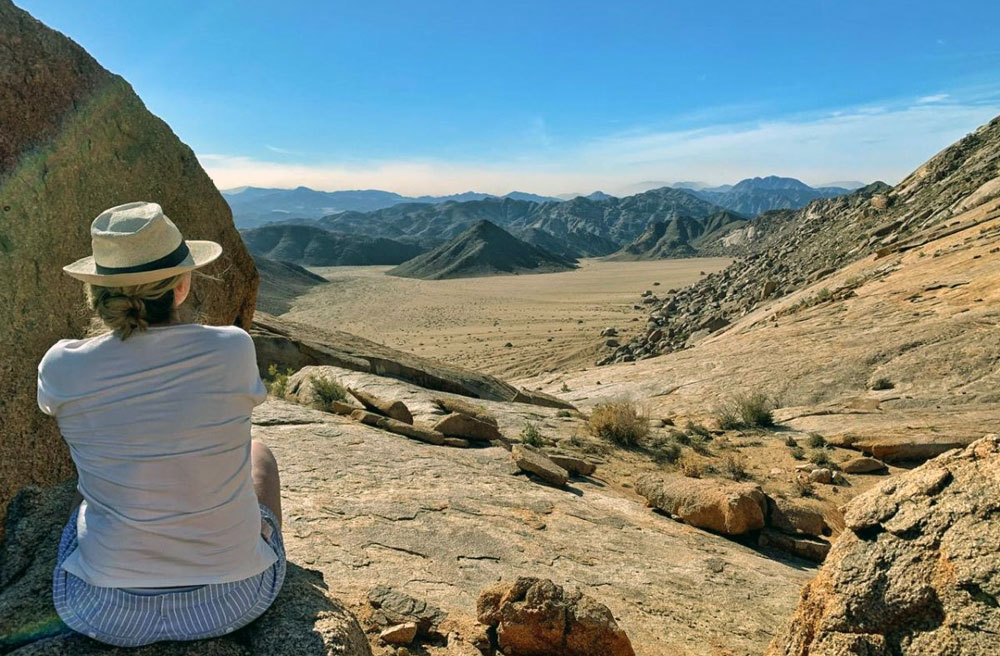
The Richtersveld is a mountainous desert region located in the northwestern part of South Africa, bordering Namibia. The area is a UNESCO World Heritage Site and is known for its unique and rugged landscape as well as its cultural heritage.
The Richtersveld is home to a diverse range of flora and fauna including many rare and endemic species. The area is characterized by its rocky terrain, deep canyons, and stunning views of the Orange River.
You can explore the area on foot, by 4×4, or on guided tours. There are several hiking trails in the area that offer visitors the opportunity to experience the rugged beauty of the region up close. Some of the most popular trails include the Richtersveld Transfrontier Trail, the Tatasberg Trail, and the Kliphuis Trail.
If you prefer to explore the area by vehicle, there are several 4×4 trails that wind their way through the Richtersveld giving you the opportunity to see the rugged landscape and wildlife from the comfort of a vehicle.
One of the highlights of the Richtersveld is the opportunity to learn about the traditional culture of the Nama people. The Nama people have lived in the area for centuries and have developed a unique culture and way of life. Learn about their traditional customs, language, music, and clothing through cultural tours and homestays.
3. Visit the Augrabies Falls
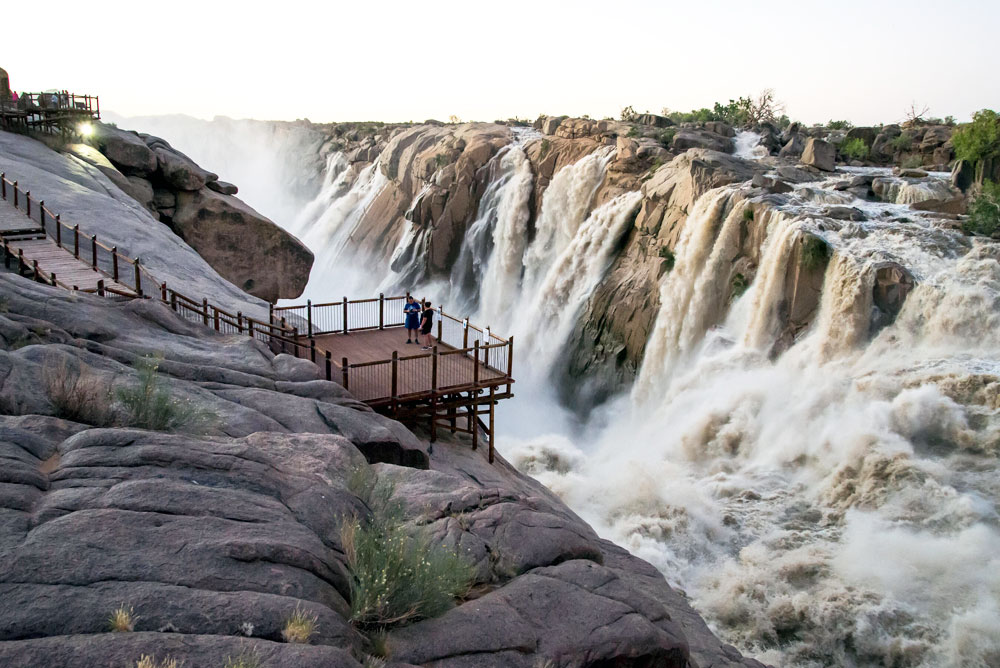
Augrabies Falls is a spectacular waterfall located in the Northern Cape province of South Africa. The falls are situated in the Augrabies Falls National Park, which is a protected area known for its unique geology and diverse wildlife.
The falls are formed by the Orange River as it flows through a narrow gorge and then plummets down a 184-foot (56-meter) high waterfall. The falls are named after the Khoi word “Aukoerebis,” which means “the place of great noise.”
You can explore the area on foot, on guided tours, or from viewpoints overlooking the falls. There are several hiking trails in the park that give you the opportunity to see the falls from different angles and explore the surrounding landscape.
The park is home to a variety of wildlife: baboons, antelope, and a large population of dassies (rock hyrax). Birdwatchers can spot over 180 bird species in the park such as fish eagles, kingfishers, and various water birds.
Other activities in the Augrabies Falls National Park include game drives, kayaking, and river rafting on the Orange River. There are also several picnic areas and campsites in the park if you want to spend more time in the area.
4. Discover the Nama Culture
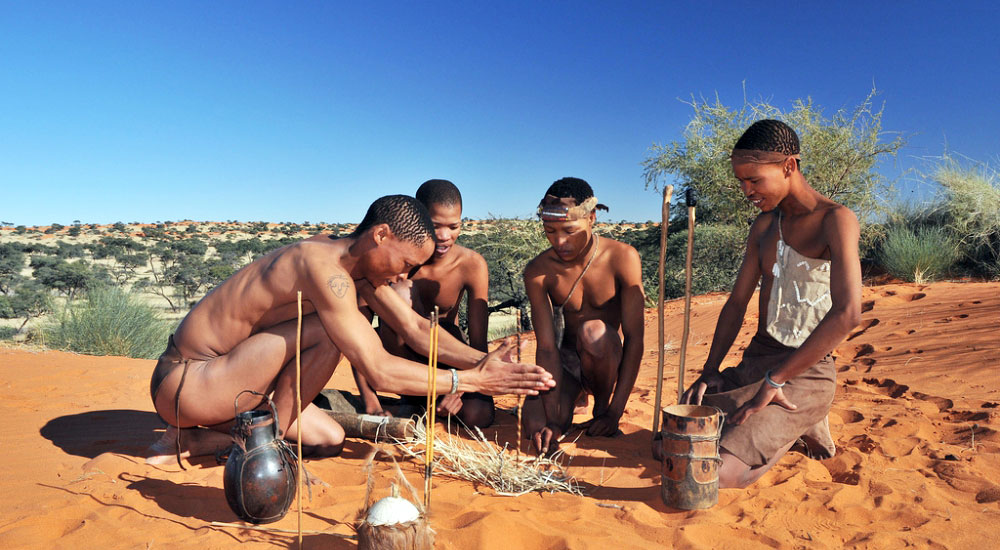
The Nama people are an indigenous ethnic group that lives in the western parts of South Africa, Namibia, and Botswana. They are believed to have originated from the Khoikhoi people, who were traditionally pastoralists and hunters.
The Nama people have a rich cultural heritage and are known for their distinctive language (characterized by the use of clicking sounds), music, clothing, and customs. Their traditional clothing is made from animal hides and adorned with intricate beadwork, while their music features unique rhythms and styles that are deeply rooted in their history and way of life.
One of the most important aspects of Nama culture is their connection to the land. The Nama people have a deep spiritual connection to their environment and believe that everything in nature has a spirit or life force. They have a wealth of traditional knowledge about the medicinal properties of plants and have developed sustainable practices for managing their resources.
The Nama people have also played a significant role in South African history, particularly during the colonial period. They were some of the first indigenous people to come into contact with European settlers and their resistance to colonialism has been celebrated in many traditional songs and stories.
Today, the Nama people are working to preserve and promote their cultural heritage with many community-based initiatives aimed at promoting traditional knowledge and practices. Learn more about Nama culture through cultural tours, homestays, and visits to local museums and cultural centers.
5. Go on a Game Drive

Namaqualand is home to a diverse range of wildlife making it an ideal destination for a game drive. There are several game reserves in the area that offer visitors the opportunity to see a variety of animals in their natural habitat.
One of the most popular game reserves in the area is the Kgalagadi Transfrontier Park, which is a massive park that spans the border between South Africa and Botswana. The park is known for its stunning landscapes, red sand dunes, dry riverbeds, and vast grassy plains. You can see a variety of animals, including lions, leopards, cheetahs, hyenas, and antelopes.
Another popular game reserve in the area is the !Khwa ttu San Culture and Education Centre. This reserve is home to a variety of animals, including zebras, elands, and ostriches, and offers you the opportunity to learn about the history and culture of the San people.
There are other smaller game reserves in the area, like the Namaqua National Park, which is home to a variety of antelope species, as well as smaller mammals like meerkats and dassies.
Game drives are typically conducted in 4×4 vehicles accompanied by experienced guides who are knowledgeable about the local wildlife and their behavior. You can also go on night game drives which give you the opportunity to see nocturnal animals in action.
6. Stargazing
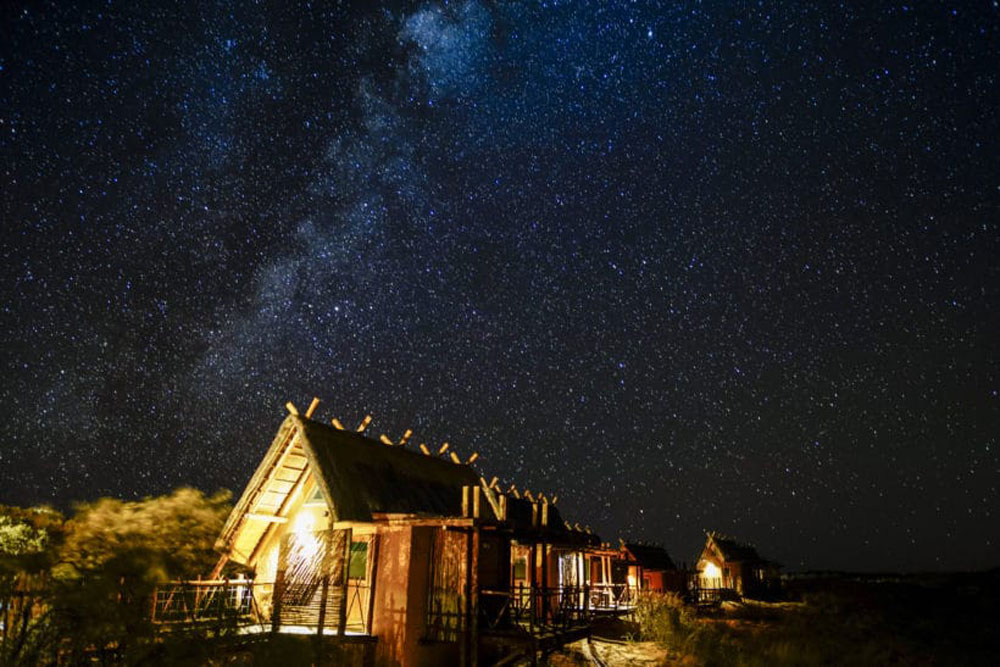
Namaqualand has some of the clearest skies in the world, making it a fantastic destination for stargazing. With little light pollution in the area, you will have the opportunity to see an incredible array of stars and celestial bodies.
One of the best places to stargaze in Namaqualand is the town of Sutherland, which is home to the South African Astronomical Observatory, where you can take guided tours of the observatory and view the stars through the powerful telescopes on site. The observatory is located at an altitude of 5,742 feet (1,750 meters), which makes for optimal stargazing conditions.
Another great place to stargaze in Namaqualand is the Namaqua National Park, which offers visitors the opportunity to camp under the stars. The park has several campsites that are equipped with basic facilities making it a great option for those who want to spend the night in nature.
The Richtersveld Transfrontier Park is another great location for stargazing. You can camp in the park and enjoy stunning views of the night sky over the rugged landscape.
Whether you’re an amateur astronomer or simply want to enjoy the beauty of the night sky, Namaqualand is a fantastic destination for stargazing.
7. Hiking at Cedarberg Mountains
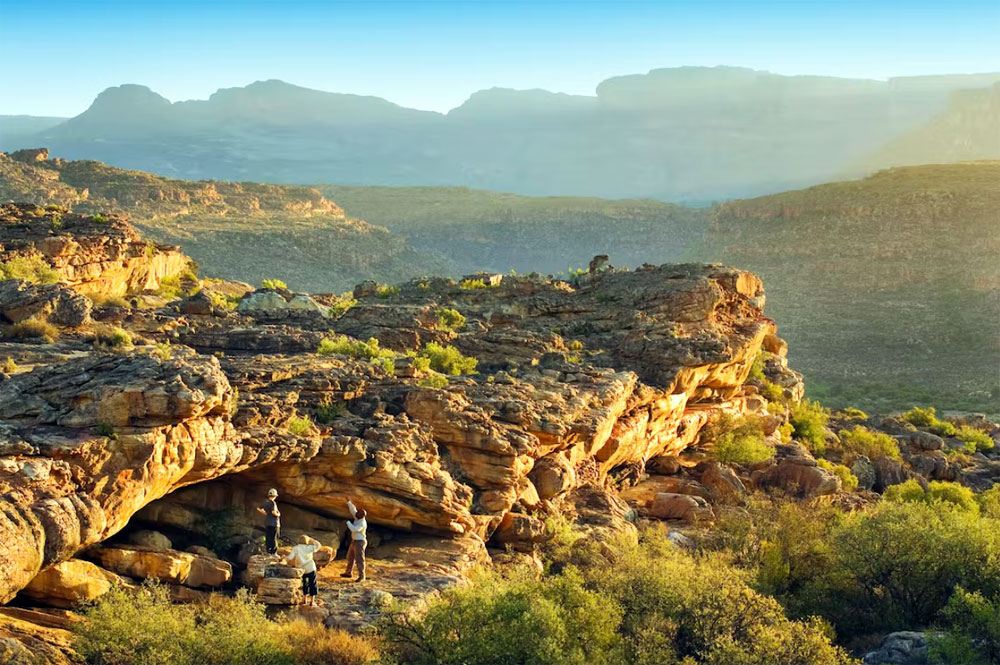
Cederberg Mountains is a beautiful area in Namaqualand that offers excellent opportunities for hiking and exploring the natural beauty of the region. The mountains are known for their rugged terrain, stunning rock formations, and unique flora and fauna.
There are several hiking trails in the area ranging from short and easy walks to more challenging multi-day hikes. One of the most popular hikes is the Wolfberg Cracks Trail, which takes hikers through a narrow canyon and up to a spectacular rock formation known as the Wolfberg Arch. The trail is approximately 7.5 miles (12 kilometers) long and is considered to be moderately challenging.
Another popular hike in the area is the Maltese Cross Trail which takes hikers to a unique rock formation in the shape of a cross. The trail is approximately 6 miles (10 kilometers) long and is considered to be relatively easy.
If you are looking for a more challenging hike, the Cederberg Traverse is a multi-day hike that takes hikers through the rugged and remote terrain of the Cederberg Mountains. The hike is approximately 43 miles (70 kilometers) long and can take up to five days to complete.
In addition to hiking, the Cederberg Mountains offer you the opportunity to explore the area’s unique flora and fauna. The area is home to several species of fynbos as well as a variety of bird and animal species, including baboons, leopards, and rock hyraxes.
8. Visit the Goegap Nature Reserve

The Goegap Nature Reserve is a beautiful area in Namaqualand that offers visitors the opportunity to explore the region’s unique flora and fauna. The reserve is located approximately 9 miles (15 kilometers) southeast of the town of Springbok and covers an area of approximately 15,000 hectares.
One of the main attractions of the reserve is its stunning displays of wildflowers during the spring months which can be seen along several hiking trails throughout the reserve. The reserve is also home to several species of animals, including baboons, dassies, and several species of antelope, such as springbok and klipspringer.
You can take a self-guided drive through the reserve and enjoy the stunning scenery, or participate in guided tours to learn more about the reserve’s unique flora and fauna.
There are also several picnic and braai areas throughout the reserve, making it a great destination for a day trip or a weekend getaway.
The Goegap Nature Reserve is also home to the Hester Malan Wild Flower Garden, which features a stunning display of indigenous flowers, including several species of proteas, daisies, and vygies.
9. Explore the Coastal Town of Port Nolloth
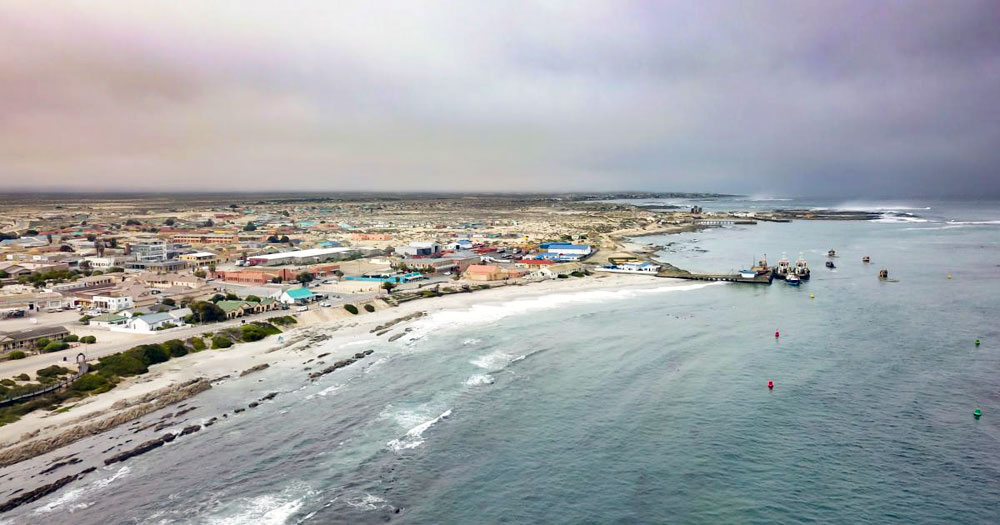
Port Nolloth is a small coastal town located on the west coast of South Africa in the Northern Cape province. The town is known for its rugged coastline, beautiful beaches, and excellent fishing opportunities, making it a popular destination for outdoor enthusiasts.
One of the main attractions of Port Nolloth is its beautiful beaches. The town has several beaches that are perfect for swimming, sunbathing, and relaxing. Some of the most popular beaches in the area include McDougall’s Bay Beach, Garies Beach, and Bapnesbaai Beach.
Port Nolloth is also a popular destination for fishing enthusiasts. The town has several fishing charters that offer you the opportunity to catch a variety of fish including yellowtail, snoek, and tuna. You also fish off the town’s jetties and piers.
In addition to its beaches and fishing opportunities, Port Nolloth is also home to several historical sites and landmarks. The town has a rich history, and you can learn more about the area’s past by visiting the Port Nolloth Museum, which features exhibits on the town’s maritime history and diamond mining industry.
10. Visit the Namaqua West Coast Wine Route
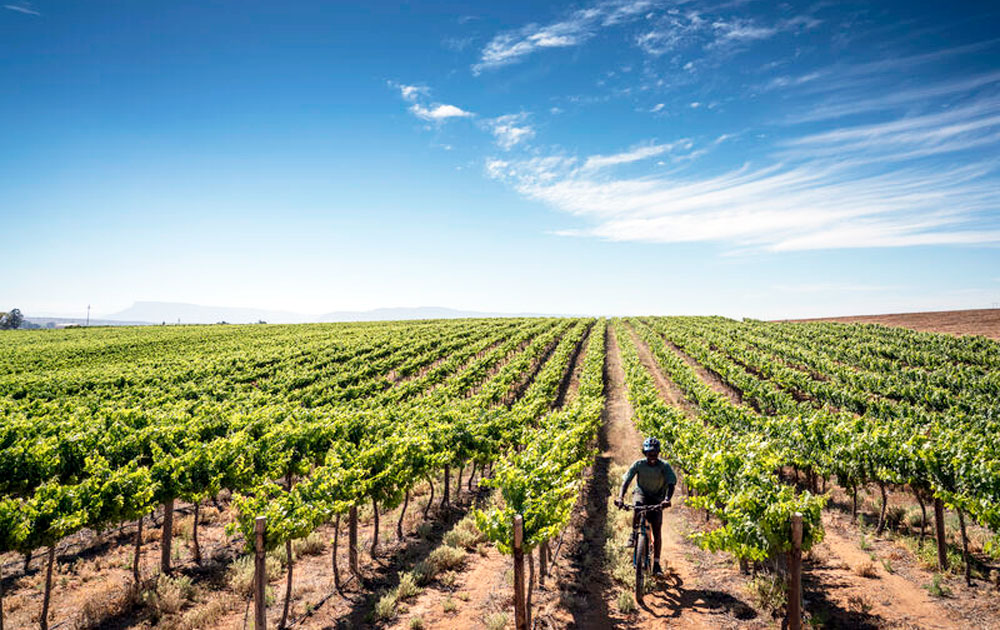
The Namaqua West Coast Wine Route is a picturesque wine route that stretches along the west coast of South Africa, in the Northern Cape province. The route includes several wineries and vineyards that produce a variety of award-winning wines.
While on the Namaqua West Coast Wine Route you can enjoy a range of experiences from wine tastings and cellar tours to picnics and vineyard walks. Some of the most popular wineries on the route include Fryer’s Cove Vineyards, Namaqua Wines, and Tierhoek Wines.
Best time to visit Namaqualand
The best time to visit Namaqualand is during the spring months of August to September. This is when the desert landscape comes to life with a colorful display of wildflowers and the region is at its most beautiful.
The wildflowers in Namaqualand are highly dependent on the amount of rainfall received in the winter months so the timing of the flower season can vary from year to year. However, in general, August and September are the best months to see the wildflowers at their peak.
It’s important to note that Namaqualand can get very hot in the summer months (December to February), with temperatures often exceeding 95°F (35°C). The winter months (June to August) can be quite cold, especially at night, so it’s important to pack warm clothing for your visit.

